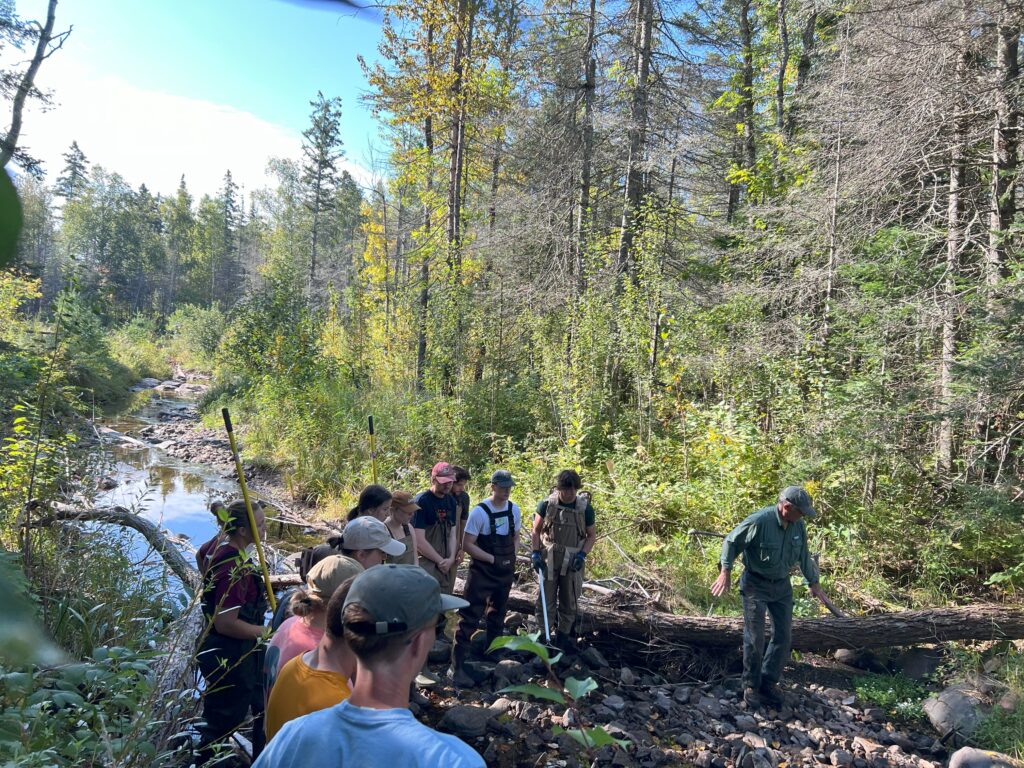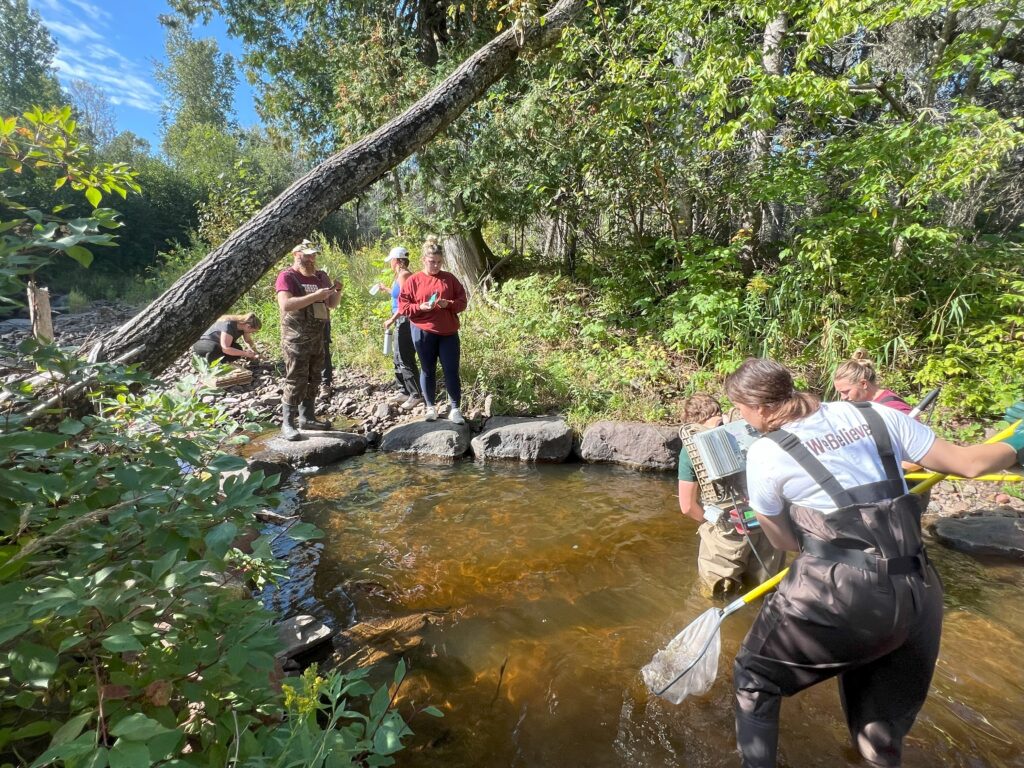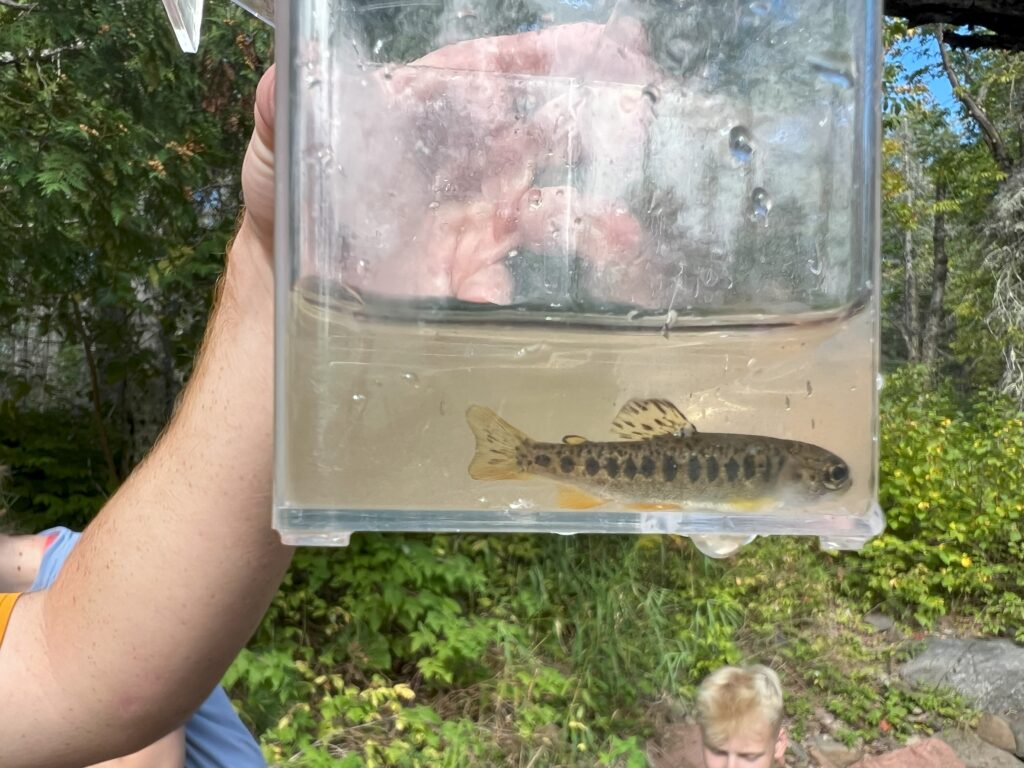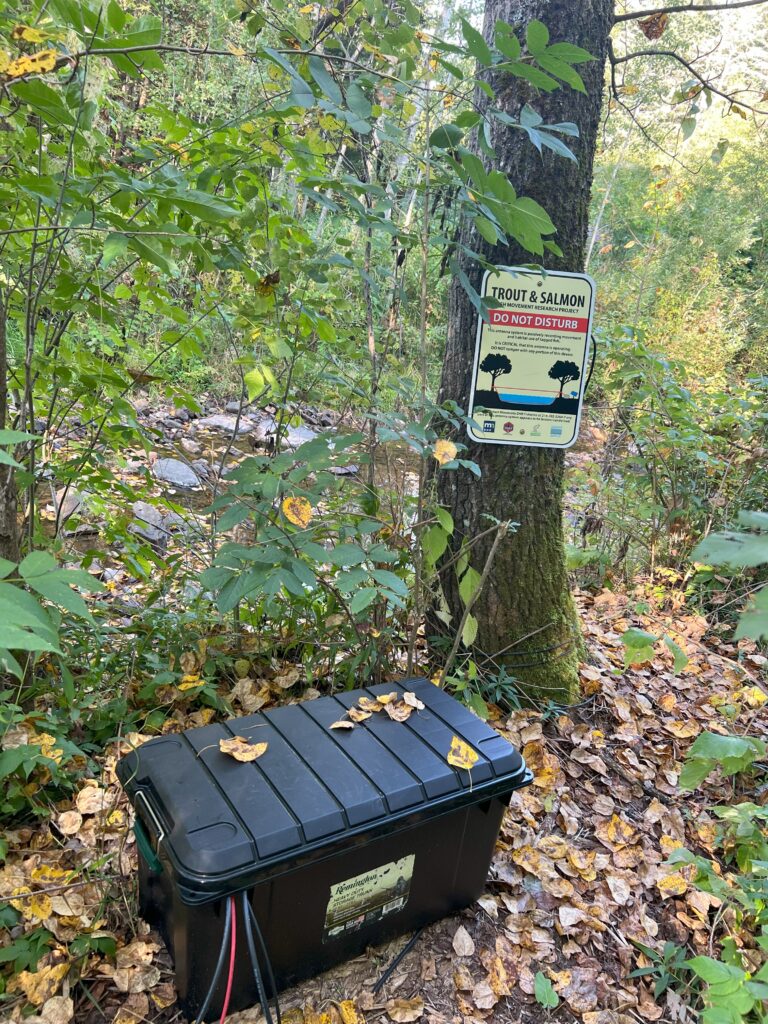Electrofishing Insights: Tracking Stream Restoration Success in Northeast Minnesota
Standing by a newly restored stream, the benefits are often clear: the eroding banks, invasive plants, and barren channels have been replaced with gently sloped banks, deep pools, spawning riffles, and thriving native vegetation. It’s easy to see how these improvements boost fish populations by creating better habitat for food production, spawning, and cover for larger fish. But how can we truly document these changes? That’s where Dr. Michael Bush, an ecologist from Concordia College (Morehead, MN), came in with his undergraduate limnology class and a backpack electrofishing unit to help us gather some evidence.
Day 1 – Keene Creek (Hermantown)
On Friday September 13th, Dr. Bush, his wife (also an ecologist), met us at Keene Creek in Hermantown, the location of two previous in stream habitat projects (completed in 2021 and 2022). Before electrofishing, project engineer Keith Anderson (Beaver River Consulting) and GGTU member and retired limnologist Dr. Peder Yurista, gave students a tour of the stream restoration project, explaining how elements of the design – like toewood, riffles, and deepened pools – serve to support the different life stages of brook trout.
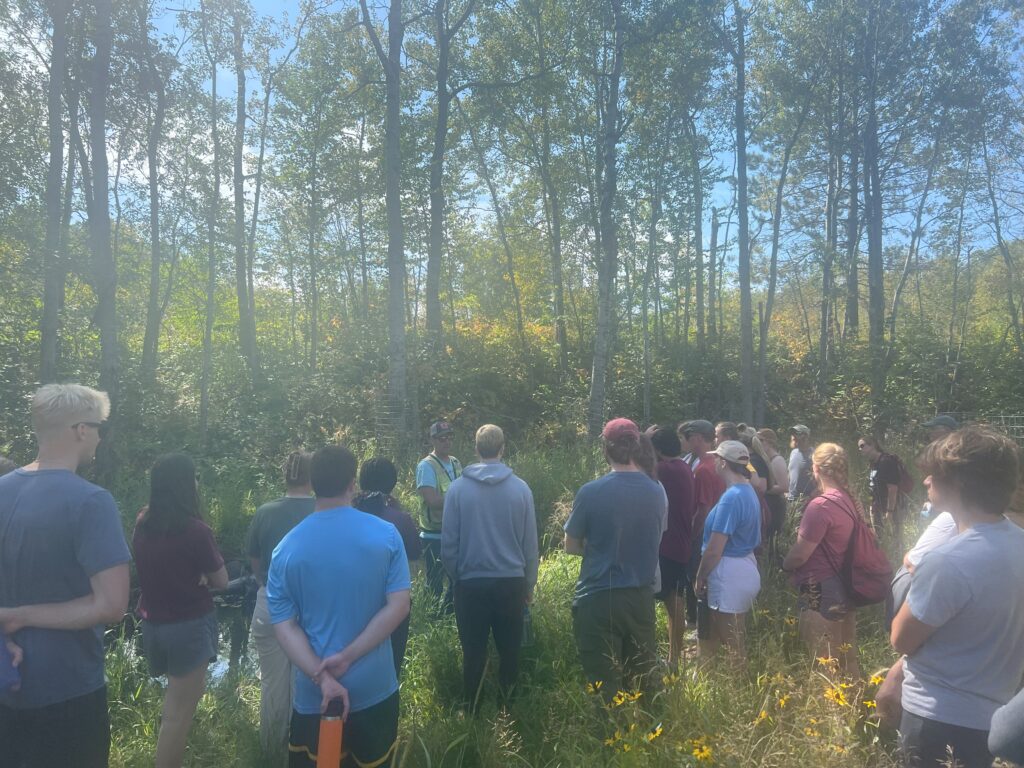
After that, Dr. Bush put on the backpack electrofishing unit, handed out some nets to his students, and fished the upper project (about 800 feet), which included several pools, riffles, boulders, and rootwads. It was exciting to see an impressive number of brook trout – approximately 100, as well as numerous nongame dace.
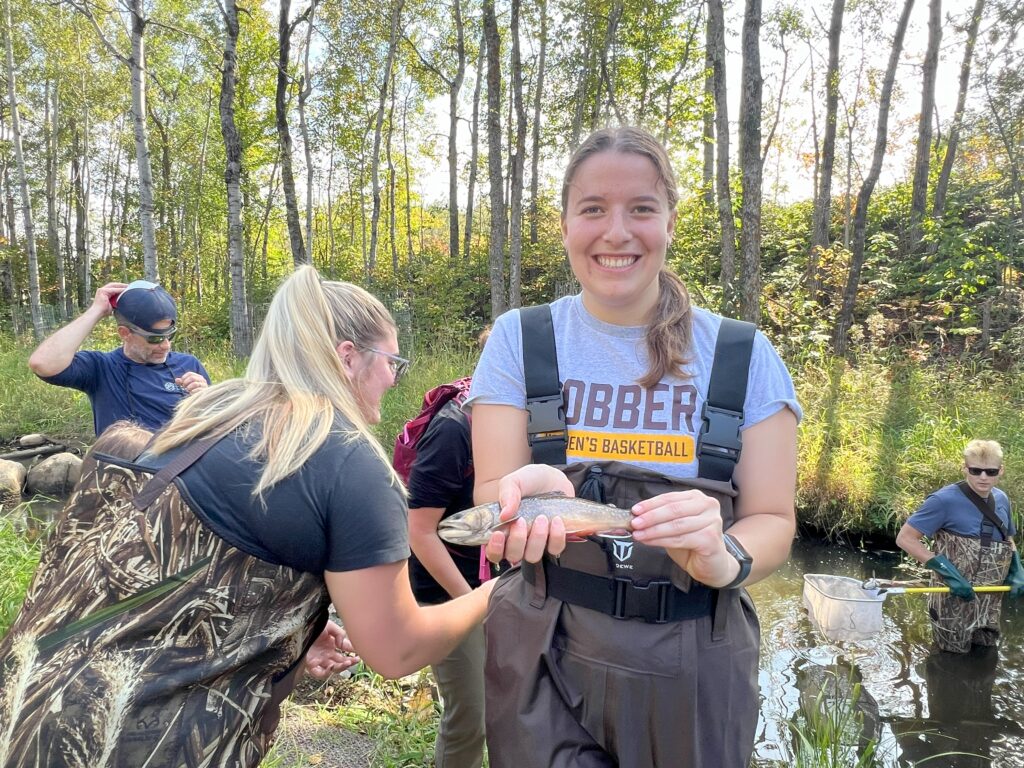
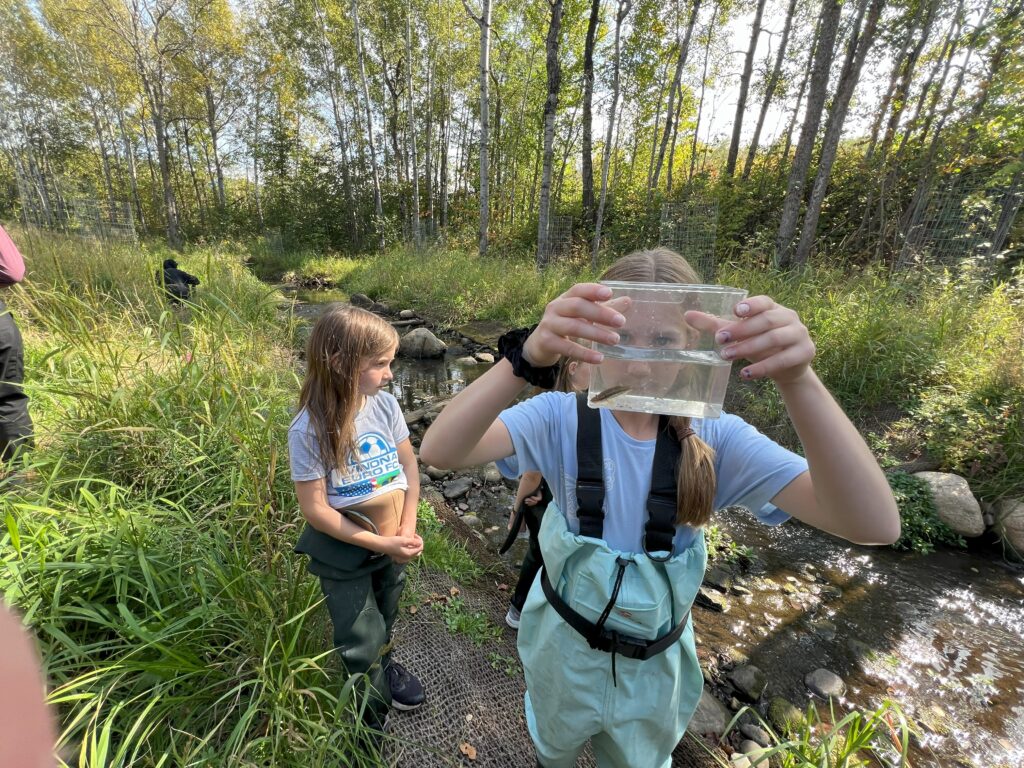
Also of note is that we collected brookies of all sizes, including age-0 young of the year, demonstrating positive recruitment into the population), and many mature adults of 7 to 11 inches, utilizing the deep pool and rootwad habitat.
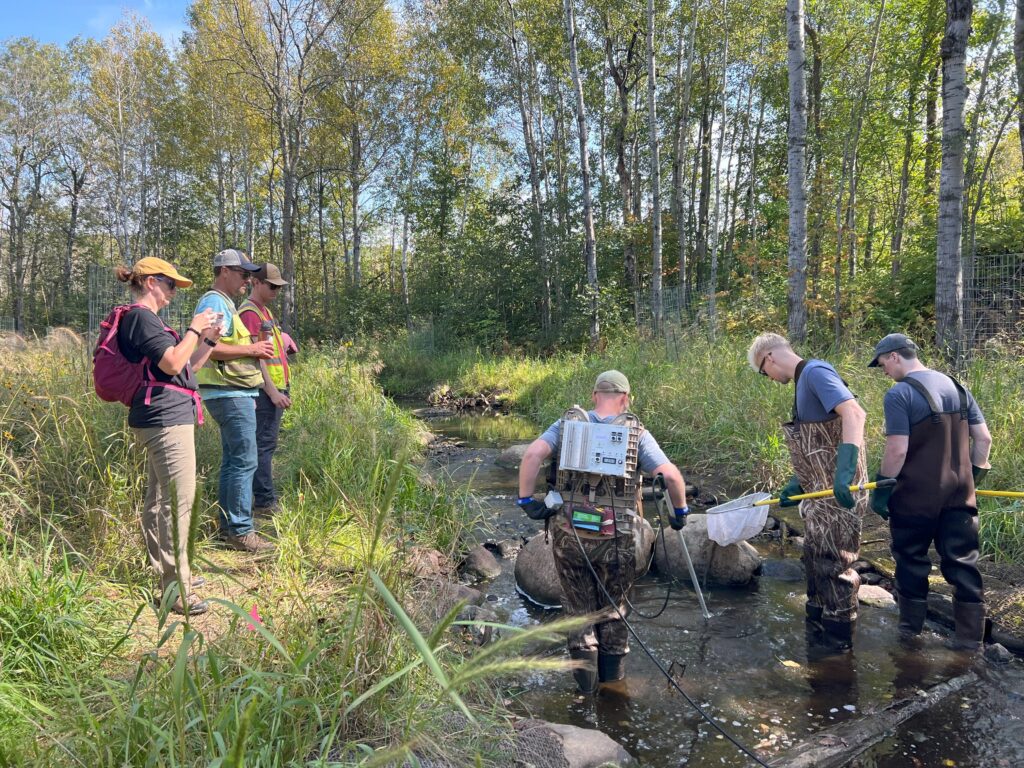
Day 2: Little Stewart River (Two Harbors)
The next morning, we met the students at the Little Stewart River – the location of recent habitat improvement projects outside of Two Harbors.
This site is also included in the MN DNR climate change research project that launched this year, where researchers have tagged 1000’s of brook trout and steelhead to track how patterns in movements relate to water temperature. So, to help them out, we brought along a handheld PIT tag reader to see if we could snag any tagged fish. Although we did not recapture any tagged fish and despite pretty low flows, we collected dozens and dozens of fish, including steelhead, bluntnose dace, and a few coho, throughout the reach. In the end, it was another exciting day of electrofishing, confirming the value of our ongoing restoration efforts to fisheries along our northeast shore.
